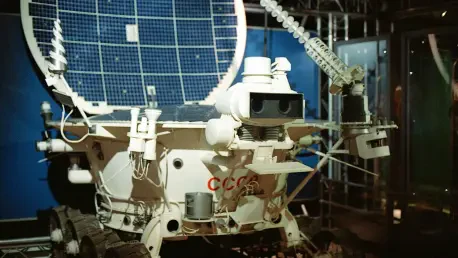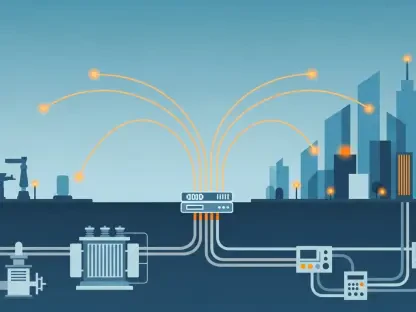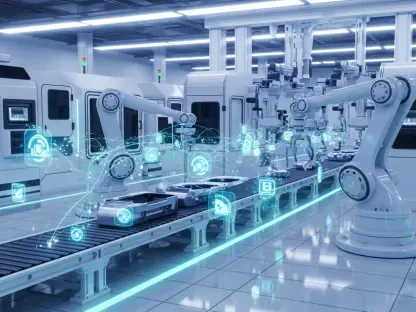The aerospace industry stands at a pivotal moment, where groundbreaking technologies are not only enhancing capabilities but also fundamentally transforming operations across defense and commercial sectors. Among these innovations, stratospheric unmanned aerial vehicles (UAVs) and aerospace robotics emerge as two powerful forces driving this change. High above the Earth, stratospheric UAVs are redefining surveillance and connectivity with their ability to operate at extreme altitudes for extended periods. Meanwhile, on factory floors, robotics is revolutionizing manufacturing by introducing unprecedented precision and efficiency in building aircraft and spacecraft. These advancements address critical needs—global security, digital access, and production demands—while pushing the boundaries of what aerospace can achieve. This exploration delves into the profound impact of these technologies, examining their growth trajectories, shared trends, and the challenges they face, while highlighting the exciting future they promise for the industry.
Elevating Capabilities with Stratospheric UAVs
Stratospheric UAVs are carving a niche in aerospace by operating at altitudes ranging from 20 to 50 kilometers, a zone where they excel in missions like surveillance, communication, and scientific exploration. These vehicles, equipped with sophisticated payloads such as high-resolution cameras and advanced sensors, offer a unique blend of endurance and coverage that traditional aircraft or even satellites struggle to match. Market projections underscore their rising importance, with the stratospheric UAV payloads sector expected to grow from $2,640 million in 2025 to an impressive $6.8 billion by 2035, driven by a compound annual growth rate of 9.9%. This rapid expansion reflects a growing reliance on these platforms to tackle pressing global issues, from monitoring environmental changes to ensuring national security. Their ability to hover over vast regions for extended durations positions them as indispensable tools in an era where real-time data and persistent presence are paramount to decision-making across multiple domains.
Beyond their technical prowess, stratospheric UAVs are gaining traction as cost-effective alternatives to satellite-based systems, particularly for tasks requiring long-term observation or connectivity solutions. Their deployment in disaster management scenarios, for instance, enables rapid assessment and coordination in areas where infrastructure is compromised. Similarly, in telecommunications, these UAVs are bridging digital divides by providing internet access to remote and underserved regions, a critical step toward global inclusivity. Technological advancements, such as lightweight materials and energy-efficient designs, further enhance their capabilities, allowing for longer missions with reduced operational costs. As military applications expand—particularly in intelligence, surveillance, and reconnaissance—these platforms are also becoming vital for strategic operations, offering real-time insights over contested or inaccessible terrains. The versatility of stratospheric UAVs marks them as a cornerstone of modern aerospace innovation.
Revolutionizing Production through Aerospace Robotics
On the manufacturing front, aerospace robotics is transforming how aircraft and spacecraft come to life, introducing levels of precision and efficiency previously unattainable through manual processes. Robots are now central to tasks like assembly, welding, and quality inspection, ensuring that every component meets the stringent standards required for flight safety. The market for aerospace robotics is on a strong upward trajectory, with valuations moving from $35.4 billion in 2024 to a projected $75.3 billion by 2035, reflecting a steady growth rate of 7.1% annually. This surge is fueled by the industry’s need to keep pace with increasingly complex designs while maintaining tight production schedules. By minimizing human error and accelerating workflows, robotic systems are not just enhancing output but also reducing risks associated with repetitive or hazardous tasks, thereby setting a new benchmark for manufacturing excellence in aerospace.
The adoption of robotics in aerospace is further propelled by cutting-edge developments like collaborative robots, or cobots, which seamlessly work alongside human operators to boost flexibility on production lines. Autonomous mobile robots also play a key role by optimizing material handling and logistics within sprawling facilities. The integration of artificial intelligence and machine learning into these systems adds another layer of sophistication, enabling real-time defect detection and process adjustments that save time and resources. Such advancements are critical as the demand for next-generation aircraft—featuring intricate components and lightweight materials—continues to rise. Beyond efficiency, robotics contributes to sustainability by minimizing waste and energy consumption during production. As aerospace manufacturers face pressure to deliver high-quality products under tight deadlines, robotic automation stands as a vital solution, reshaping the industry’s approach to building the vehicles that define modern exploration and travel.
Interconnected Trends Driving Aerospace Forward
A closer look at stratospheric UAVs and aerospace robotics reveals a shared foundation of innovation that is propelling the broader aerospace sector into a new era. Both technologies are underpinned by a relentless push toward automation and digital integration, addressing distinct yet complementary challenges. For UAVs, advancements in miniaturization and energy efficiency enable high-altitude missions with greater impact, while in robotics, AI-driven systems enhance manufacturing precision and adaptability. This convergence of cutting-edge solutions highlights a unified trend: the aerospace industry is increasingly reliant on sophisticated technology to meet evolving demands for security, connectivity, and production capacity. Together, these innovations are creating a more responsive and capable sector, ready to tackle global challenges with agility and foresight.
Another striking synergy lies in the dual-purpose nature of both markets, serving both defense and commercial interests with equal significance. Stratospheric UAVs support military reconnaissance and civilian internet provision, ensuring their relevance across public and private spheres. Similarly, aerospace robotics aids in crafting military jets and commercial airliners alike, benefiting from cross-sector investments that fuel further development. This overlap fosters collaboration between governments, defense organizations, and private enterprises, amplifying the reach and impact of these technologies. As global needs for enhanced surveillance, seamless communication, and efficient manufacturing grow, the combined influence of UAVs and robotics is evident in their ability to bridge gaps and drive progress. Their shared trajectory points to a future where aerospace is defined by integrated, technology-driven solutions that prioritize both innovation and practicality.
Navigating Challenges and Barriers to Progress
Despite their transformative potential, stratospheric UAVs and aerospace robotics face significant hurdles that could impact their widespread adoption. For UAVs, regulatory complexities pose a major challenge, as operating in the stratosphere involves navigating intricate international airspace rules that vary widely by region. Additionally, the high costs of developing and deploying these platforms, coupled with the technical difficulties of ensuring reliability under extreme conditions like low temperatures, demand substantial investment and research. These barriers underscore the need for coordinated efforts among stakeholders to streamline policies and advance technological resilience, ensuring that the benefits of high-altitude UAVs are fully realized without compromising safety or accessibility in global operations.
In the realm of aerospace robotics, challenges center on the substantial upfront costs of implementing robotic systems and the associated need for specialized training to operate and maintain them. Concerns about job displacement also loom large, as automation can shift workforce dynamics, necessitating strategies to reskill employees for new roles within the industry. Integrating robotics into existing production lines often requires significant reconfiguration, leading to potential downtime and further expenses. Addressing these issues calls for a balanced approach that prioritizes both technological advancement and social responsibility, ensuring that the transition to automation enhances rather than disrupts the aerospace manufacturing ecosystem. Overcoming these obstacles is crucial for sustaining the momentum of robotics as a driver of efficiency and quality in production processes.
Envisioning the Future of Aerospace Innovation
Looking ahead, the future of stratospheric UAVs holds immense promise, with emerging applications poised to expand their impact across diverse fields. Climate monitoring, disaster response, and the rollout of 5G connectivity in remote areas are just a few areas where these platforms could make a significant difference. As digital divides persist globally, UAVs offer a scalable solution to connect underserved populations, fostering economic and social progress. Partnerships between governments and private entities are expected to accelerate innovation, driving down costs and enhancing deployment capabilities. This collaborative spirit will likely position stratospheric UAVs as a linchpin in addressing some of the world’s most pressing connectivity and security challenges over the coming decade.
For aerospace robotics, the horizon is equally bright, particularly with the rise of the commercial space sector creating new opportunities for growth. Robotic systems will be instrumental in satellite production, assembly of space exploration vehicles, and even in-space construction projects that push the boundaries of human ambition. Continued investment in research is anticipated to yield more advanced robots capable of handling increasingly complex tasks with greater autonomy, thanks to ongoing developments in AI and machine learning. These advancements will solidify robotics as an essential component of aerospace manufacturing, ensuring that the industry can meet future demands with speed and precision. The path forward involves leveraging these technologies to build a more innovative and sustainable aerospace landscape.
Reflecting on a Transformative Journey
Reflecting on the strides made, it’s clear that stratospheric UAVs and aerospace robotics have carved out indispensable roles in the aerospace industry’s evolution. Their contributions span from enabling high-altitude surveillance and connectivity to streamlining the intricate processes of aircraft production with robotic precision. Each technology has addressed unique challenges, yet together they paint a picture of an industry that thrives on innovation and adaptability. The challenges they encountered, from regulatory hurdles to workforce transitions, have been met with determined efforts to balance progress with responsibility. As their impact deepens, the groundwork is laid for a future where aerospace capabilities know fewer limits. Moving forward, stakeholders should focus on fostering collaboration, investing in research to overcome remaining barriers, and ensuring that these technologies continue to serve both global needs and local communities with equity and foresight.









